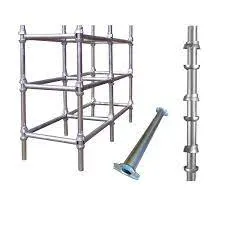Oct . 08, 2024 21:53 Back to list
Companies Specializing in Lightweight Concrete Formwork Solutions and Innovations
The Rise of Lightweight Concrete Formwork Companies
The construction industry has undergone significant transformations in recent years, particularly with the advent of new materials and technologies. One of the most notable advancements is the development of lightweight concrete formwork. As the demand for efficient, sustainable, and cost-effective construction methods increases, lightweight concrete formwork companies are becoming a critical part of the building landscape.
What is Lightweight Concrete Formwork?
Lightweight concrete formwork refers to temporary or permanent molds used to shape concrete while it sets. Traditionally, formwork was made from heavy timber or metal, which could add substantial weight and labor costs to a construction project. The emergence of lightweight alternatives, including materials such as fiberglass, plastic, and aluminum, has revolutionized this process. These modern formwork systems offer significant advantages they are easier to handle, require less labor for installation, and can often be reused multiple times, thus reducing overall material waste.
Advantages of Lightweight Formwork
1. Reduced Labor and Transportation Costs The lightweight nature of these formwork systems means they can be transported and handled with greater ease. Workers can quickly set up or dismantle the molds, leading to shorter project timelines and reduced labor costs. This efficiency is particularly beneficial in projects with tight deadlines.
2. Enhanced Design Flexibility Lightweight concrete formwork systems allow for intricate designs and unique architectural features that traditional methods may struggle to support. This flexibility opens up new possibilities for architects and builders, enabling them to create complex structures with fewer constraints.
3. Sustainability As the construction industry faces mounting pressure to adopt sustainable practices, lightweight formwork provides an eco-friendly solution. Many lightweight materials are recyclable and can be reused multiple times, which helps mitigate waste and reduce the overall environmental impact of construction projects.
4. Improved Safety The risks associated with handling heavy materials are significantly reduced with lightweight formwork. Construction sites can benefit from improved safety protocols when workers are not burdened by the physical strain of heavy lifting. This can lead to fewer workplace accidents and a healthier workforce.
lightweight concrete formwork companies

The Growing Market and Key Players
The lightweight concrete formwork industry has witnessed impressive growth, fueled by rapid urbanization and increasing infrastructure development worldwide. Major construction firms are increasingly investing in lightweight solutions to remain competitive and meet client demands for faster, more efficient builds.
Several companies are emerging as leaders in this niche market. Companies specializing in lightweight formwork often combine innovation with traditional construction techniques, ensuring that they remain at the forefront of industry trends. Noteworthy players include brands that focus on high-performance materials, those that emphasize sustainability, and firms devoted to research and development aimed at enhancing formwork efficiency.
One such company could be recognized for its innovative modular systems that not only make the installation process faster but also feature advanced technology to optimize the curing process of concrete. Others may stand out for their commitment to sustainability, using eco-friendly materials in the production of formwork.
Challenges Ahead
While the future of lightweight concrete formwork appears promising, challenges remain. The initial investment costs can be significant, which might deter smaller companies from transitioning to lightweight systems. Additionally, there is an ongoing need for education and training in new technologies and materials, as well as ensuring compliance with safety and building regulations.
Conclusion
As the construction industry continues to evolve, lightweight concrete formwork companies play an essential role in shaping the future of building practices. Their contributions towards reducing labor costs, improving design flexibility, and embracing sustainable practices are pivotal. For builders, architects, and construction managers, adopting lightweight formwork will not only streamline projects but also promote innovation in design and construction techniques. With the ongoing focus on efficiency and sustainability, the role of these companies is set to expand even further in the coming years, paving the way for a more agile and responsible construction industry.
-
High-Quality Column Formwork Systems for Curved and Circular Columns
NewsJul.27,2025
-
High Quality Climbing Formwork for High-Rise Buildings & Core Walls
NewsJul.26,2025
-
High Quality Climbing Formwork for High-Rise Building & Core Wall Solutions
NewsJul.25,2025
-
High-Quality Slab Formwork Solutions for Efficient Construction
NewsJul.24,2025
-
High-Quality Wall Formwork Systems for Versatile Concrete Construction
NewsJul.23,2025
-
Climbing Formwork Solutions for High-Rise Construction Efficiency
NewsJul.22,2025